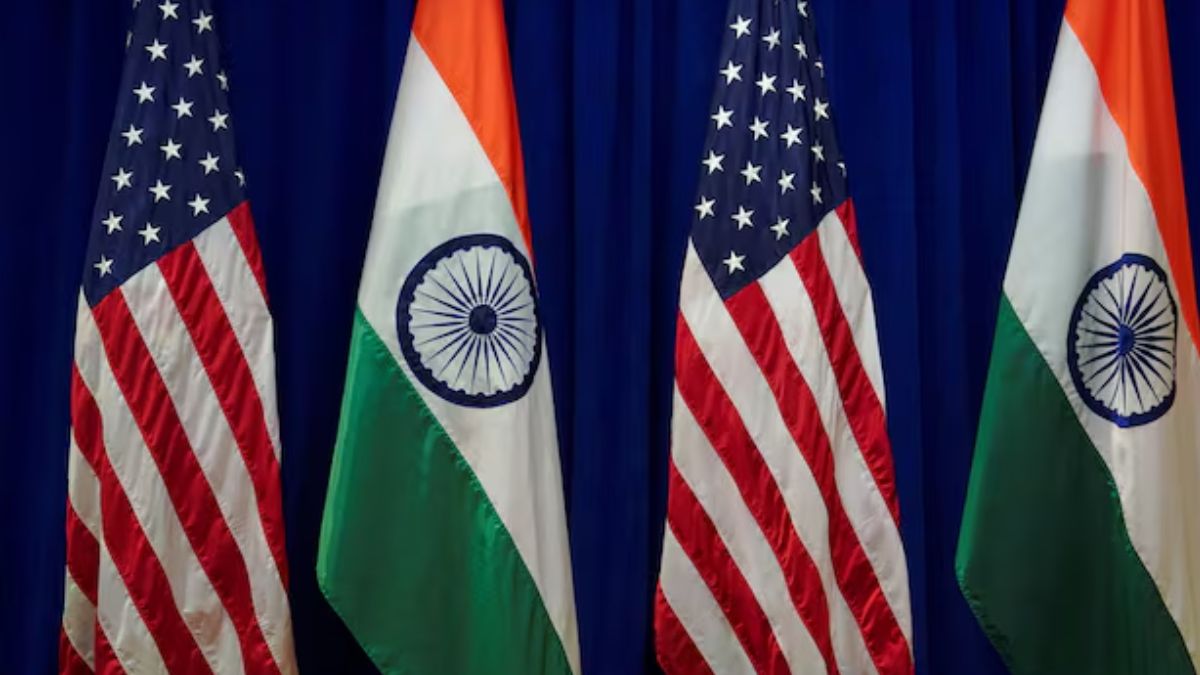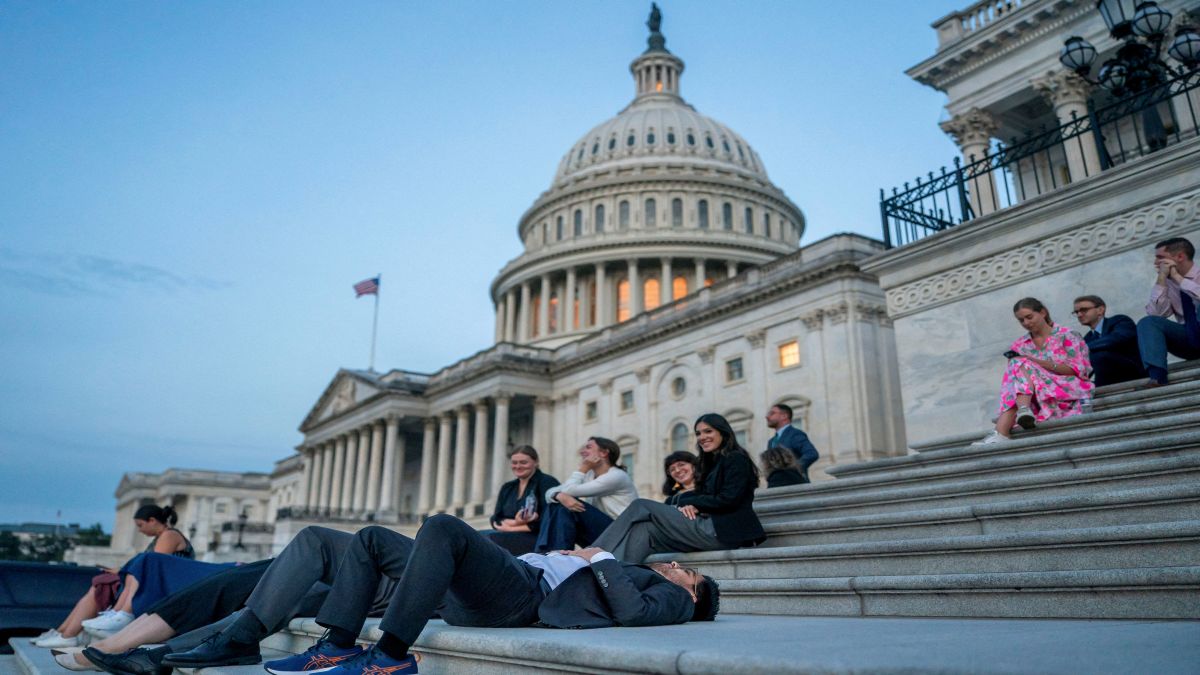A striking contrast springs forth from some recent economic reports: the United States is grappling with a colossal debt burden while India charts a course of steady, resilient growth. Think about how these two giants—one a long-standing superpower, the other an emerging force—embody different approaches to fiscal management and trade as of now. The US national debt has crossed $38 trillion as of October, and interest payments are squeezing budgets hard. Meanwhile, India’s trade-to-GDP ratio hovers around 46 per cent, similar to Japan’s, underscoring a balanced model.
An economist would see opportunities here for both nations in deregulation and liberalisation to drive innovation.
For India, the opportunity is historic: the global economy is pivoting from hyper-globalisation to “friend-shoring”, and India’s demographic weight makes it the natural alternative to China. Multinationals relocating from East Asia increasingly see India not merely as a cheap-labour base but as a rule-of-law, English-speaking democracy aligned with open markets. The contrast with America’s over-regulated tech and fiscal environment could not be starker.
US fiscal challenges: Debt, interest and military hegemony
The United States is navigating deep fiscal waters that could undermine its stability if left unchecked. The attraction of US Treasury bills has diminished with emerging alternatives globally, but the root problem is persistent overspending. Gross national debt stands at $38 trillion, over 100 per cent of GDP, with interest payments devouring budget shares. In the current fiscal year, net interest costs hit $970 billion, surpassing defence spending of $917 billion but trailing healthcare outlays above $1.5 trillion. This crowding-out dynamic highlights the perils of fiscal laxity. The debt has grown rapidly, adding $1 trillion in just 71 days earlier this year, driven by factors like delayed borrowing amid debt-ceiling debates.
The US maintains a vast military presence, with estimates of overseas bases ranging from 128 major sites to over 800, including smaller installations. Japan hosts 120, Germany 119, and South Korea 73. This network bolsters global influence but drains resources amid rising deficits. Balanced budgets are not ancient history; surpluses ran from 1998 to 2001, but post-2002 trends, amplified by pandemic aid and tax reductions, have reversed that.
On US economic policy, the pivot to tariffs deviates from free-market tenets. Aimed at revitalising manufacturing and countering imbalances—such as China’s roughly $525 billion in annual exports to the US—tariffs warp markets, hike prices and risk reprisals. They have raised $88 billion so far in 2025, but at the cost of higher consumer prices and potential GDP drag. Genuine leadership emerges from economic dynamism via deregulation, not bases or barriers. The US ought to trim entitlements, privatise underperformers and pursue open trade pacts to curb debt and enhance output. A more stable world would aid this by shifting funds from defence to ingenuity, embodying capitalist priorities.
Quick Reads
View AllRecent Congressional Budget Office projections show that without spending reform, the US public debt will hit 116 per cent of GDP by 2034—the highest in its history. Yet Washington continues to experiment with industrial-policy subsidies such as the CHIPS and Science Act and the Inflation Reduction Act. Together they commit nearly $1 trillion in tax credits, corporate incentives and grants—precisely the sort of state-driven distortion that crowds out innovation. America’s private sector once thrived on open competition and minimal state direction. Today, subsidy-chasing “green corporatism” risks producing a new class of rent-seekers dependent on federal favour.
Trade dynamics: Contrasting consumption and export models
Trade figures illuminate the divergent paths of these economies. In India’s fiscal year 2024-25 (ending March 2025), exports reached about $821 billion (merchandise plus services), against imports of $915 billion, resulting in a trade-to-GDP ratio of 44.7 per cent. This is akin to Japan’s 41-46 per cent, while the US sits at 27 per cent, Germany at 88 per cent, and China at 37-40 per cent. Projections suggest India’s exports outpaced Japan’s by some $120 billion last year when services are factored in, though surpassing Germany’s exports by 2029 appears ambitious; GDP forecasts look brighter.
India’s service flows to the US are substantial at $41.6 billion, with global capability centres adding $64 billion in value. Still, India’s consumption-led economy, supported by $700 billion in forex reserves and private gold stocks worth $3.8 trillion (88-89 per cent of GDP), offers a buffer against volatility. Gold serves as a tappable resource, offsetting modest per capita income. The RBI holds 880 tonnes, with 65 per cent now domestic.
The US, fuelled by consumption, depends on imports, inflating deficits. Tariffs, while addressing outsourcing woes, clash with the laissez-faire ethos by shielding inefficiencies. Trade flourishes via comparative edges; the US must lower walls, bolster education and nurture startups to rival others, eschewing coercive tactics.
India’s export resilience owes much to deregulated service sectors and competitive labour markets. The next stage must extend that freedom to manufacturing. The Production-Linked Incentive (PLI) schemes, while useful initially, need gradual withdrawal so firms can compete globally without subsidies. Already, Apple, Foxconn and Dixon Technologies are scaling up exports worth $15 billion annually. If import duties on electronics and components are reduced further, India could integrate into global supply chains as efficiently as Vietnam or Mexico.
India’s ongoing free-trade talks—completed with the EFTA bloc, nearing closure with the UK and progressing with GCC and EU—can open markets for high-value goods. Every 1 per cent reduction in tariff barriers could lift India’s exports by $9 billion, according to a World Bank estimate.
Government size: Myths and realities
The notion of the US as a bastion of small government is overstated; its expenditure-to-GDP ratio is 36-40 per cent, exceeding India’s 17-20 per cent (including central and state levels). Federal-focused metrics might show lower, but India retains flexibility for growth without immediate strain. Its bureaucracy is leaner per capita—about one-third the US scale—highlighting productivity hurdles over sheer size. The US has around 3 million federal employees, while India’s central government has 3.1 million.
Recent US moves, like equity in key firms such as Intel (10 per cent) and MP Materials (15 per cent), veer towards state capitalism, potentially curbing rivalry while aiming at chain security—an oversized government curbs innovation. The situation calls for universal government downsizing. For the US, reform entitlements and privatise; for India, hasten public enterprise sales to spark efficiency.
India’s record here is improving. In the last decade, the government has privatised Air India, merged or closed 70 loss-making PSUs, and listed defence PSUs on the NSE. But the divestment pipeline—spanning BSNL, Shipping Corporation and IDBI Bank—must accelerate. The lesson from the 1990s liberalisation still holds: once private players enter previously closed sectors, prices fall, innovation spikes and employment expands. India’s fiscal prudence allows lower taxes without jeopardising stability—something the US has failed to emulate amid spiralling welfare outlays.
Free-market reforms: Path forward for both economies
The new world order rewards free-market adopters over protectors or interveners. The US’s tariff reliance could sideline it, whereas India’s gradual shifts set a strong base. Absolute primacy flows from free trade, minimal hurdles and personal initiative—not dominance or disruption.
For the US, embrace austerity: Cut spending, simplify taxes and deregulate to liberate capital for private ventures, easing debt loads.
India’s 7-8 per cent growth is impressive, yet the following deeper reforms could amplify it.
Expand trade freedom: Secure FTAs with key groups, shrinking deficits via diversified exports beyond services. Negotiations with the EU have concluded 10 of 20 chapters, aiming for completion by year-end.
Boost privatisation: Speed up non-core PSU divestments for efficiency and FDI influx. The government targets Rs 10,000 crore in FY 25.
Refine administration: Digitise to slash bureaucracy, elevating output.
Wisely leverage gold: Programmes directing household stocks to investments could infuse liquidity sans inflation.
Use human capital: Market-based education, via vouchers and contests, to fill expertise voids.
India’s digital public infrastructure—UPI, ONDC, Aadhaar and DigiLocker—demonstrates how open, interoperable platforms outperform state monopolies. These frameworks empower private fintechs and MSMEs to scale globally. Extending the same openness to education, through portable learning credits and private accreditation, can transform India’s talent base. The US once epitomised this model through competition among private universities and corporate-funded R&D, but over-regulation and student-debt inflation have dulled that edge.
If India ensures intellectual-property protection and lowers entry barriers for venture capital, it could see its start-up economy rival Silicon Valley by the early 2030s. The semiconductor incentives in Gujarat and Tamil Nadu already show promise, but must evolve into a fully competitive ecosystem with minimal state direction.
A short timeline underscores this divergence:
1991–2004: India’s economic liberalisation lifted GDP growth from 1.3 per cent to 7 per cent, while the US enjoyed a post-Cold War tech boom under deregulated markets.
2008–2015: America turned to quantitative easing and bailouts; India expanded welfare but maintained fiscal restraint.
2016–2025: US industrial policy resurged, while India continued disinvestment, FDI liberalisation and digital deregulation.
If this trajectory holds, India’s laissez-faire revival could replace Western interventionism as the global growth model by 2047.
Anchored in swelling reserves and better ratings, these reforms would hasten India’s ascent to developed ranks by 2047, via market-led progress.
This prescription for US-India dynamics highlights vast potential. Through deregulation and prudence, both can thrive amid changes. Success hinges on market empowerment, not external narratives, for enduring wealth.
(The author is a senior journalist and writer. Views expressed in the above piece are personal and solely those of the author. They do not necessarily reflect Firstpost’s views.)


)

)
)
)
)
)
)
)
)



